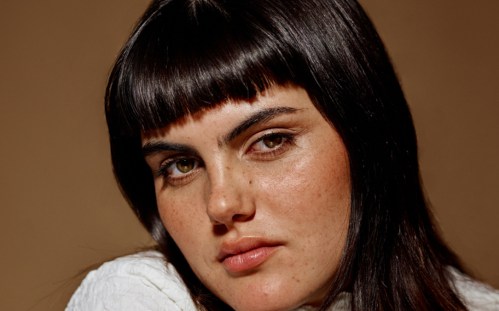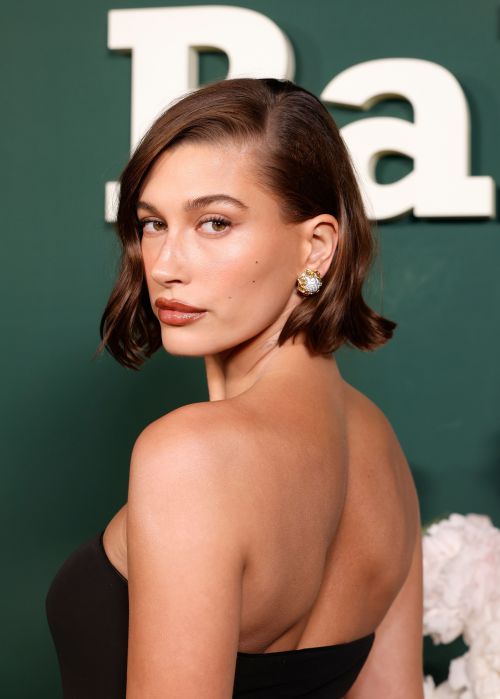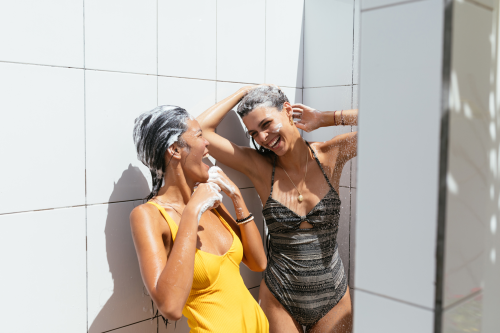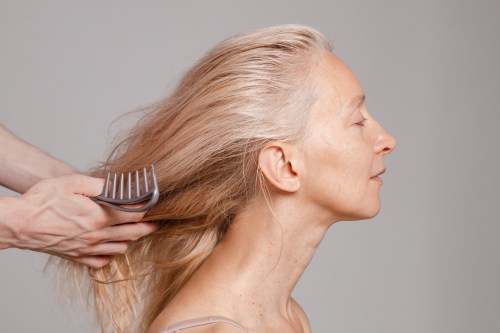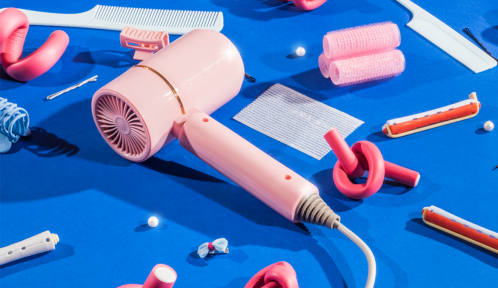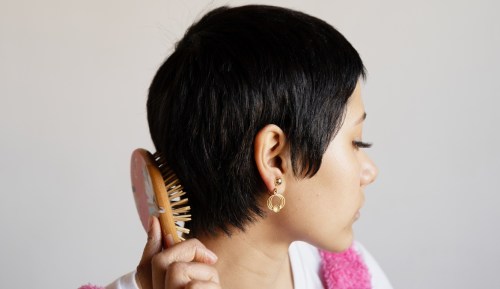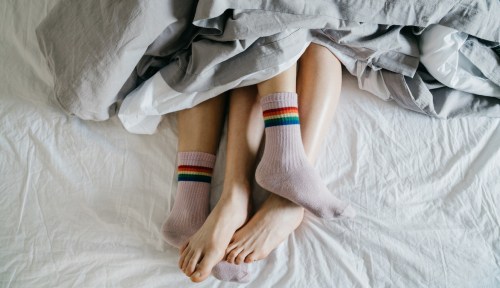Our editors independently select these products. Making a purchase through our links may earn Well+Good a commission
Here’s the thing: there’s no wrong way to wear your eyebrows. For some people, thin brows are the look (we’re talking about you, Pamela Anderson), while others are more comfortable with brows of the bushy caterpillar variety. However, no matter how you like to wear your brows, if they start to shed or lose hair, the sparse spots can detract from the appearance you’re going for. To help keep those babies healthy, we asked board-certified dermatologists Dr. Dendy Engelman and Dr. Lauren Penzi and brow stylists Jimena Garcia, Melanie Marris, and Maritza Ramirez for their tips on how to grow eyebrows.
Experts in This Article
board-certified dermatologic surgeon at Shafer Clinic Fifth Avenue in New York City
brow expert at Chanel
board-certified dermatologist based in New York.
aesthetician at Haus Salon in Minnesota.
Celebrity Brow Expert and founder of Brow Code.
Why is my eyebrow hair falling out?
If you’re dealing with hair loss in your eyebrows, rest assured that you’re not alone. Stress (and stress hormones) play a significant role in hair loss. Elevated cortisol can cause hair follicles to shift out of the growth phase and fall out—the same thing that happens with telogen effluvium, aka stress-induced alopecia. Dr. Engelman also says that eyebrow hair growth also changes as we age. “Our eyebrow hair follicle growth slows down as we age, giving the impression that the hair is no longer growing. However, this is not always the case,” she explains.
Skin conditions and your habits can also affect your eyebrow hair and cause it to fall out. Sometimes, using harsh chemicals in bleach or dyes (or even really strong retinol) can interfere with hair growth in the brow. Or you could experience hair loss from years of plucking or over-waxing, which can damage the hair follicle and weaken growth.
“There are certain medical conditions that can cause hair loss, including thyroid disorders and alopecia areata,” Dr. Penzi explains. “Genetics, aging, and hormones can all influence brows to thin out and stop growing.” Whatever the cause of your sparse brows, several at-home treatments can help return them to their full glory (more on that ahead).
Is it possible to regrow your over-plucked eyebrows?
Yes, your eyebrows can grow back—even if they’re victims of vicious overplucking. “Plucking should not cause permanent scarring or obliteration of the hair follicle,” says Dr. Penzi. “The follicles should still be viable and capable of regrowth.” Still, if you want to allow your brows to grow without interference, you should put down the tweezers.
Can you make your eyebrows grow and thicken naturally?
There are plenty of ways to support brow growth naturally from regular cleansing to massaging them. To better your chances, check out the following brow maintenance tips from experts.
1. Exfoliate your eyebrows
The first step in rehabbing your brow hairs back to their fullest potential is exfoliating. “It’s important to exfoliate our brows because we carry a lot of dry skin underneath our brow hair,” says Garcia. “What happens is that we’re unable to absorb whatever creams or oils we put onto our dry skin. So when you take the dead skin off your brows, you’re opening the door for new hairs to grow and prevent ingrowns.” Garcia says you can DIY a hydrating brow scrub using finely ground pink salt from your kitchen and castor or facial oil. “This is wonderful because then, after you exfoliate, you’re receiving all of the benefits from these oils that you use,” says Garcia.
2. Massage the area around your eyebrows
Much like your scalp, massaging your brows can help to stimulate hair follicles. “When you brush or massage your brows, you’re creating stimulation and the circulation in the bloodstream,” says Garcia, saying anything from your fingers and an oil to a gua sha stone, like the Wildling Empress Stone ($69), can do the trick.
3. Do a weekly brow mask
Your brows can benefit from a weekly mask, too. “Castor oil is a popular, natural option to help the brows grow or thicken,” Dr. Penzi says. “It is rich in fatty acids and nutrients that can nourish hair follicles.”
4. Stay hydrated
According to Dr. Penzi, staying hydrated and eating a well-balanced diet, including vitamins and minerals like vitamins A and E, biotin, and omega-3 fatty acids, can help with overall hair health—brows included. Topical hydration also counts here. “Use a hydrator to protect and seal moisture into the skin barrier,” says Dr. Engelman. “[Next to castor oil], coconut oil and tea tree oil are also intense hydrators that penetrate deeply into the skin barrier providing essential minerals to our cells, which creates an optimal environment for follicle growth.”
5. Create a brow routine
Marris says making brow care a regular part of your routine is the best way to keep the hair you have healthy. “Your brows deserve the same attention and care as your skin or hair,” she says. “You should incorporate brow oil into your daily routine. These oils typically have fatty acids, which work overtime to hydrate and strengthen the hair shafts.”
What products help with eyebrow regrowth?
While your ability to grow hair is genetic, there are products you can use to help retain existing brow hairs and keep them healthy. Dr. Engelman mentions Nulastin Brow Shape Altering Serum ($79) as a favorite and notes that she finds the formula non-irritating. Another one of Dr. Dendy’s favorites? Revitalash Revitabrow Eyebrow Conditioner ($111), which she says nourishes the brows area and helps prevent breakage.
How can I fill my sparse eyebrows?
There’s no shortage of solutions to fill in sparse eyebrows, from at-home pencils to in-salon treatments. Ramirez says her favorite products for those with sparse brows are pens and gels. Benefit’s new Precisely My Brow Detailer ($25) pencil has the tiniest tip (we’ve ever seen) and creates thin strokes that literally look like hairs. If the thought of standing in a mirror for minutes drawing teeny hairs makes your eyes roll, then a quick and easy brow powder might be more your speed. And if you’d rather head to the salon? Ramirez says don’t underestimate the power of brow shaping and tinting, which can help sparse brows look fuller for a few days.
Why aren’t my eyebrows growing?
“Eyebrows can thin out and stop growing for several reasons, from certain medical conditions like thyroid disorders and alopecia areata to genetics, aging, and hormones,” says Dr. Penzi. “Trauma to the follicle for aggressive over plucking or over waxing could also potentially cause enough damage that the hairs do not grow back.”
How long do eyebrows take to grow?
There’s no way to speed up eyebrow growth; it’s all part of a process. “Typically, you’ll notice eyebrow hair growth anywhere between six weeks and four months. This depends on your age, hormones, genetics, and lifestyle factors such as diet, stress, and climate,” Dr. Engelman explains.
A hair’s growth cycle is split into four stages. “The first stage determines the length of the hair. This stage is called the anagen stage, lasting around 30-45 days depending on the body part,” Dr. Engelman says. “Next, the catagen stage causes the hair to shrink so it can transition from blood supply to the surface,” she says. “The third stage, known as the telogen stage, is a resting period where the hair is inactive, and you will shed older hair. Lastly, the exogen stage is when new follicles are formed, thus restarting the hair growth cycle.” Overall, the process might take months, and isn’t something you should bank on happening overnight.
Final Takeaway
Growing out your eyebrows can feel like an annoying, never-ending process until you get to a place you’re happy with, but your best bet is to focus on the overall health of your brows. We know it’s easier said than done, but some extra lovin’ and a lot of patience can go a long way. Plus, thanks to tons of innovation in the brow department, products keep getting better, making enhancing your brows much easier. Still, if drastic or sudden hair loss is what you’re dealing with, you should talk to your board-certified dermatologist, who can help get to the root of your concern.
Sign Up for Our Daily Newsletter
Get all the latest in wellness, trends, food, fitness, beauty, and more delivered right to your inbox.
Got it, you've been added to our email list.
